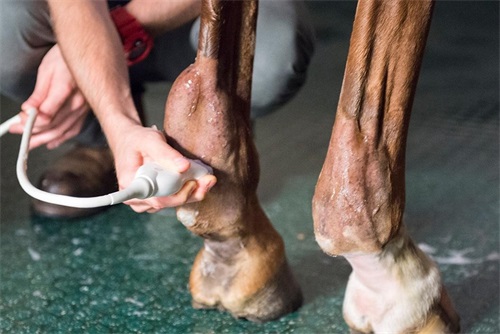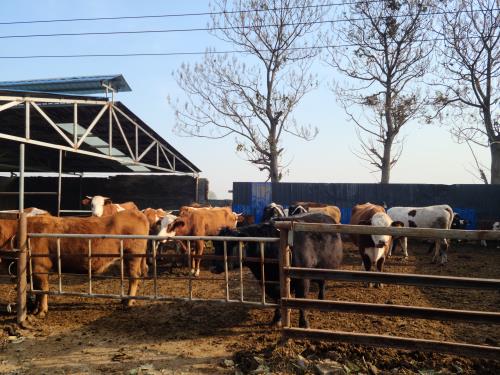When people think of ultrasound, they often imagine human medicine—checking fetal development during pregnancy or scanning internal organs for early signs of disease. But in the world of livestock farming, ultrasound has quietly become one of the most valuable tools we have. Whether you're raising pigs, cattle, sheep, or horses, this technology helps you see what’s going on inside an animal’s body without surgery, stress, or guesswork.

Ultrasound isn't new, but its role on the farm is growing fast. Today, farmers and veterinarians around the world rely on ultrasound to improve animal welfare, breeding success, and production efficiency. Let’s take a closer look at how ultrasound is being used across different areas of livestock farming—and why it's become such a game-changer.
1. Diagnosing Pregnancy Early and Accurately
One of the most common uses of ultrasound on farms is pregnancy diagnosis. In cattle, sheep, pigs, and goats, early detection of pregnancy allows farmers to adjust nutrition, group animals more efficiently, and avoid wasting time or resources on non-pregnant females.
For example, with the right training and equipment, cows can be checked for pregnancy as early as 21–30 days after insemination. Compare that to manual palpation, which often requires waiting 40–60 days. That time difference can seriously impact calving schedules and the overall productivity of the herd.
In pigs, where reproductive cycles are tightly managed, being able to confirm pregnancy early means sows that didn't conceive can be re-inseminated quickly, reducing the number of empty days—a costly delay for any commercial operation.
2. Monitoring Fetal Health and Development
Once pregnancy is confirmed, ultrasound is also helpful in tracking fetal development. It’s especially valuable in horses and high-value breeding operations. Equine veterinarians often use ultrasound to monitor embryonic heartbeat, check for twins (which are dangerous in mares), and observe fetal movement throughout gestation.
In small ruminants like sheep and goats, monitoring fetal number and size helps farmers plan for lambing or kidding. Knowing whether a ewe is carrying twins or triplets can influence how much feed she gets in the last few weeks of pregnancy. That’s crucial—underfed dams are more likely to have weak offspring or complications during birth.
3. Improving Breeding and Reproductive Timing
Ultrasound is also used to evaluate reproductive organs before breeding. For cows, this might involve checking the ovaries to see if a dominant follicle is present, or whether a corpus luteum (a hormone-producing structure) has formed—both important signs of where the cow is in her cycle.
Veterinarians use B-mode ultrasound to visualize these structures in real-time. This is helpful not only for natural breeding but also for artificial insemination (AI) and embryo transfer programs. By accurately identifying the right timing, the chance of successful conception increases, which saves both time and money.
Ultrasound can even be used to track ovulation in real-time. In timed breeding protocols, this helps fine-tune hormone treatments or determine whether a cow has ovulated after AI, giving farms another layer of reproductive control.
4. Measuring Muscle and Fat for Meat Production
Beyond reproduction, ultrasound is widely used to assess body composition in beef cattle and pigs. It gives insight into eye muscle area (EMA), fat thickness, and marbling—all indicators of carcass quality. These traits directly affect meat pricing and consumer preference.
Let’s say you’re a beef farmer. Knowing when your steers have reached optimal fat coverage without being overfed can save thousands in feed costs and maximize profits at the slaughterhouse. Ultrasound provides this kind of data weeks or even months before the animal is harvested.
In young pigs, producers often use ultrasound to track backfat and loin eye area. This helps in adjusting feeding strategies and identifying superior genetics for future breeding. As animal nutrition becomes more precise, ultrasound makes it easier to match diet plans with real-time growth.

5. Detecting Illness and Internal Abnormalities
Sometimes, animals don’t show clear symptoms even when something is wrong. With ultrasound, vets can look inside to identify internal issues like:
Uterine infections
Ovarian cysts
Retained placentas
Fluid buildup in the lungs or abdomen
Bladder or kidney problems
For example, in dairy cattle, postpartum uterine infections are a common issue that can delay breeding. An ultrasound scan helps detect abnormal fluid in the uterus, enabling quicker treatment and reducing long-term reproductive damage.
In pigs, especially during large-scale production, rapid scanning of females post-farrowing can catch retained fetal parts or abnormal uterine conditions before they lead to health problems or fertility loss.
6. Supporting Animal Welfare through Non-Invasive Monitoring
Unlike blood tests or surgical biopsies, ultrasound is non-invasive and doesn't stress animals. Most exams are done with the animal standing, and the probe only needs to touch the skin (with some gel or alcohol applied for image clarity). This reduces animal handling, lowers injury risk, and makes it easier to conduct regular checks.
In large farms where handling every animal individually can be time-consuming, wireless and handheld ultrasound units like the BXL-V50 allow technicians to move quickly from pen to pen, capturing high-quality images and saving them for review. Some systems even sync with smartphones or tablets, making the data easy to share or archive.
7. Adapting Ultrasound to Different Animal Species
Ultrasound isn’t a one-size-fits-all tool—it’s adapted to suit the anatomy and physiology of various animals. For example:
Convex probes are commonly used for deep abdominal scanning in cattle and pigs.
Linear probes are better for surface-level measurements like muscle depth or small animal scans.
Transrectal probes are used for reproductive tract evaluation in cows and mares.
Micro-convex probes offer versatility in smaller animals like sheep or goats.
Whether scanning a 600-kg beef steer or a 70-kg sow, modern ultrasound machines come with adjustable depth, contrast, and probe options to ensure reliable results in each species.
8. Data-Driven Decision Making on the Farm
What sets ultrasound apart from other diagnostic tools is how quickly it turns information into action. With real-time imaging, a farmer or vet can make immediate decisions:
Is this cow pregnant?
Should we inseminate now or wait?
Has this sow recovered properly after farrowing?
Are these steers ready for market?
Should this ewe get more energy in her diet?
The ability to answer these questions on the spot is what makes ultrasound such a practical tool. Combined with good record-keeping, it allows farms to track performance over time and build strategies for better genetics, health, and profitability.
Final Thoughts
Ultrasound is no longer just a tool for vets—it’s a vital part of modern livestock management. From pregnancy checks to growth evaluation and disease detection, it gives farmers a powerful way to make informed decisions without invasive procedures.
As the livestock industry grows more focused on efficiency, animal welfare, and product quality, tools like ultrasound will only become more essential. Whether you run a large-scale cattle operation or a small family pig farm, investing in this technology can pay off through healthier animals, fewer losses, and better returns.









